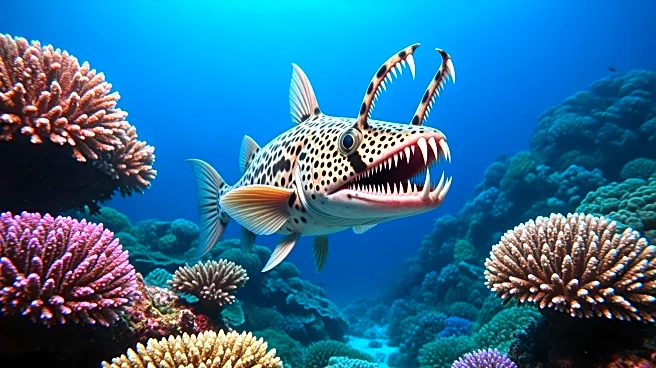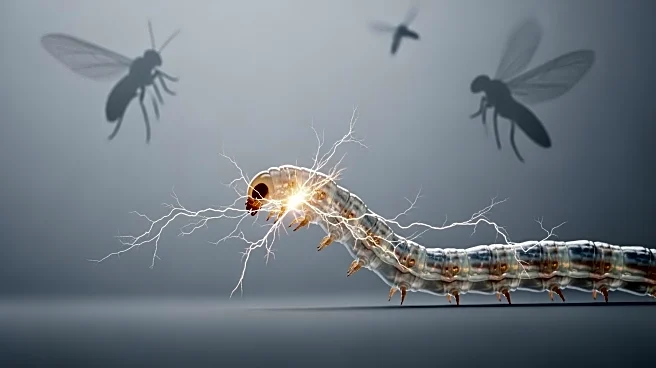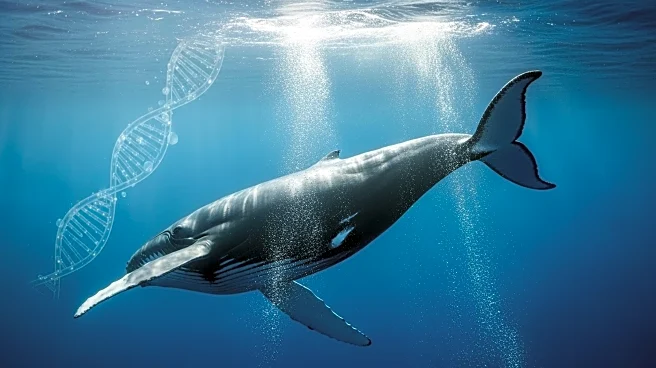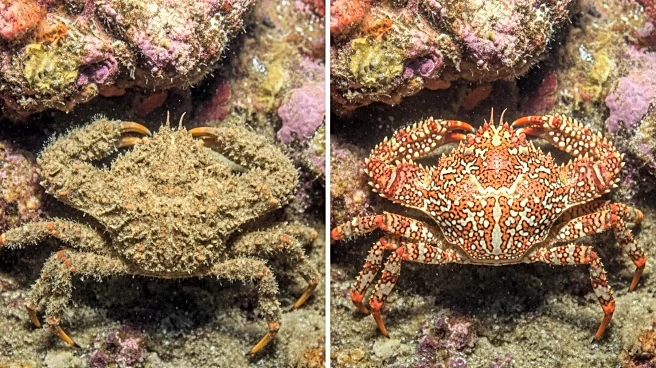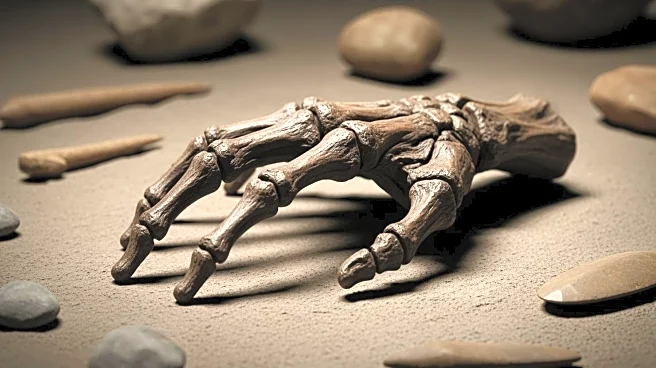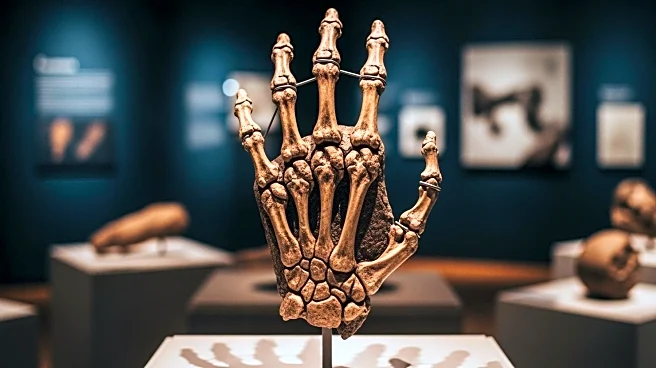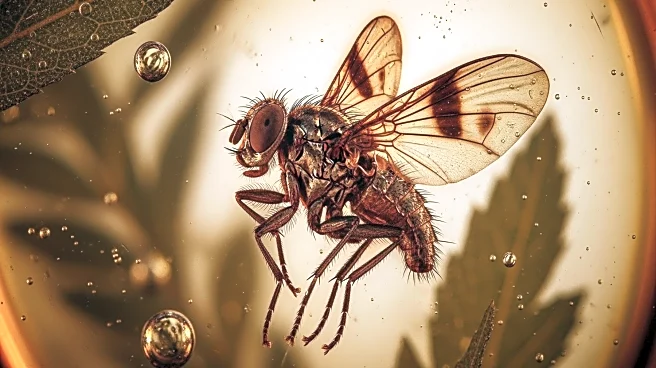What's Happening?
Researchers have discovered that the spotted ratfish, a shark-like species found in the northeastern Pacific Ocean, has rows of teeth growing on top of its head. These teeth are located on a cartilage-based structure known as the tenaculum, which is used
by male ratfish for mating and display. This finding challenges the long-standing assumption that teeth are strictly oral structures, suggesting that they may have evolved elsewhere on the body. The study, published in the Proceedings of the National Academy of Sciences, involved micro-CT scans and tissue samples to analyze the development of the tenaculum and its teeth.
Why It's Important?
The discovery of teeth on the spotted ratfish's head has significant implications for understanding the evolution of vertebrate dentition. It suggests that teeth may have evolved in different parts of the body, providing new insights into the genetic and developmental processes that govern tooth formation. This research could lead to a reevaluation of the evolutionary history of teeth, impacting studies in evolutionary biology and paleontology. Additionally, understanding the unique mating structures of the ratfish could inform research on reproductive strategies in marine species.
What's Next?
Further research is needed to explore the genetic and developmental pathways that led to the formation of teeth on the ratfish's tenaculum. Scientists may investigate whether similar structures exist in other species, potentially revealing new aspects of vertebrate evolution. The findings could also prompt a broader examination of tooth development across different animal groups, leading to new discoveries in evolutionary biology.
Beyond the Headlines
The study of the spotted ratfish's tenaculum highlights the dynamic nature of evolutionary processes, challenging traditional views on the development of biological structures. It underscores the importance of examining lesser-known species to gain a comprehensive understanding of evolutionary history. This research may also inspire ethical discussions on the manipulation of genetic pathways in scientific research, emphasizing the need for responsible exploration of evolutionary biology.
